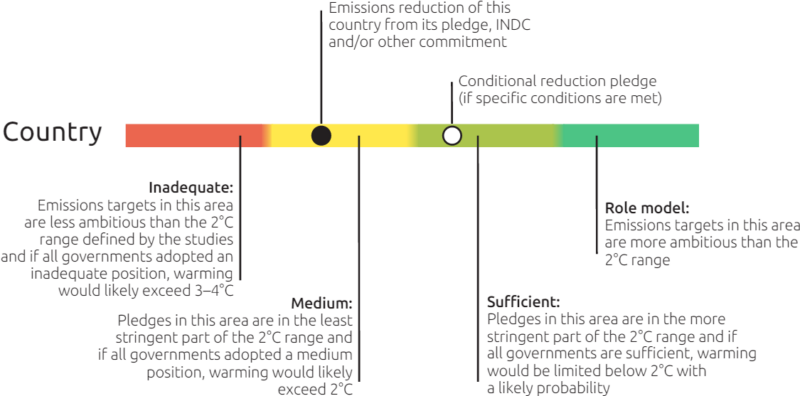Are governments doing their “fair share”? - new method assesses climate action
Share

The Climate Action Tracker (CAT) has developed the most comprehensive method yet of simultaneously assessing the “fairness” and “below 2°C compatibility” of government climate action put forward for the Paris Agreement, expected to be adopted in December this year.
Scientists from the CAT’s four research organisations (Climate Analytics, Ecofys, NewClimate Institute, Potsdam Institute for Climate Impact Research) have spent months working on a new way of assessing just how “fair” the action of each government is, compared with what it should be doing to contribute to the globally-agreed aim of holding warming to below 2°C.
The CAT has applied this to four INDCs – (intended nationally determined contributions) submitted to the UNFCCC by the first deadline: the EU, Switzerland, Mexico and Norway and all are rated “Medium.”
This means their INDC’s are not compatible with holding warming below 2°C, unless many others were to do more than their fair share. If all countries were rated “medium,” the 2°C limit would likely be breached. Mexico’s assessment is underway.
“Assessing the fairness of climate action is particularly important because of the number of higher pledges that are conditional on other governments making comparable efforts,” said Niklas Höhne, of NewClimate Institute.
“Everybody has a different way of deciding what is a “fair” effort on climate change. Some consider it fair that those who have made a bigger contribution to the problem, or have a higher capability to act, should do more. But even if that were agreed, how much more should they do?”
For the first time, the CAT has produced a fully transparent way of comparing proposals with the many interpretations of what is fair. It has applied these to all the countries it assesses.
In some cases, such as China, which hasn’t yet submitted its INDC, the CAT has assessed its announced policies. The US is expected to announce its INDC this week but it is anticipated to be very much along the lines of what it has already announced. Both have been rated medium. The US INDC rating will be formally assessed once out.
“While there has been some progress in what Governments are proposing for the post 2020 period, with several countries moving from “inadequate” to “medium”, proposals are still a long way from being 2°C compatible,” said Bill Hare of Climate Analytics.
“We hope our effort sharing assessment helps governments, the media and observers to interpret the offers made in the run-up to anticipated adoption of the Paris Agreement in December in terms of below 2°C compatibility and fairness. There are many claims being made by governments as to what is fair, and what is comparable, and now there’s an independent, objective assessment that will provide that information.”
The effort sharing assessment is a far-reaching compilation of a wide range of literature on what researchers would consider a “fair” contribution to greenhouse gas reductions in the context of global efforts to limit warming below 2°C. The CAT has included in its database the over 40 “effort-sharing” studies used by the IPCC (chapter 6 of WG III ) and has carried out its own, additional, analyses to complete the dataset.
The assessment covers very different viewpoints of what could be fair, including considerations of equity, such as historical responsibility, capability, and equality. We only include those results from studies that are compatible with limiting warming below 2°C.
The CAT has assessed 30 governments, including all the big emitters, and a selection of smaller emitters from across the developing country spectrum. New countries added to the assessment include: Ethiopia, Gambia, Nepal, Peru, Philippines, Saudi Arabia, United Arab Emirates, and Turkey. Those who have not submitted their INDC’s have had their 2020 pledges and policies assessed.











